China’s Real Estate Conundrum: The Big Property Bubble vs. Ghost Towns

ZHUZHOU, China — The road from the center of this midsize city in China’s Hunan province to the new high-speed railway station in its suburbs is lined with newly built and, in some cases, half-completed high-rise buildings — along with billboards advertising high-end real estate.
The names and the slogans are alluring: “In the city, on the mountain, villa life,” says one. “Rain Valley — Zhuzhou’s first love-themed garden,” proclaims another. “Luxury Bay,” “Luxury Mansions,” “Original French-style villas and row houses,” the aspirational list continues.
Yet in the city center, where most of the population still actually lives, the slogans on the advertising boards are more down-to-earth and suggest that all may not be quite so rosy in the garden of real estate, in this city in south-central China.
“Buy one get one free!” says an advertisement for units in a new commercial building. “Pay 1,000 yuan upfront to join our group-purchasing collective, and we’ll give you an extra room for just 1 yuan more!” tempts another. And there are many others: “Free home electronics, no tax, free maintenance fund;” "Free leisure balcony;” “Cheaper price this month;” “See two rooms become three rooms;” “Buy an apartment and we’ll give you a free storefront for a year” ... the opportunities seem endless.
Even the ads for the luxury villas seem to be trying just a bit too hard: “Buy an apartment of 130-180m this month, and we’ll give you gold and diamonds!” offers one slogan.
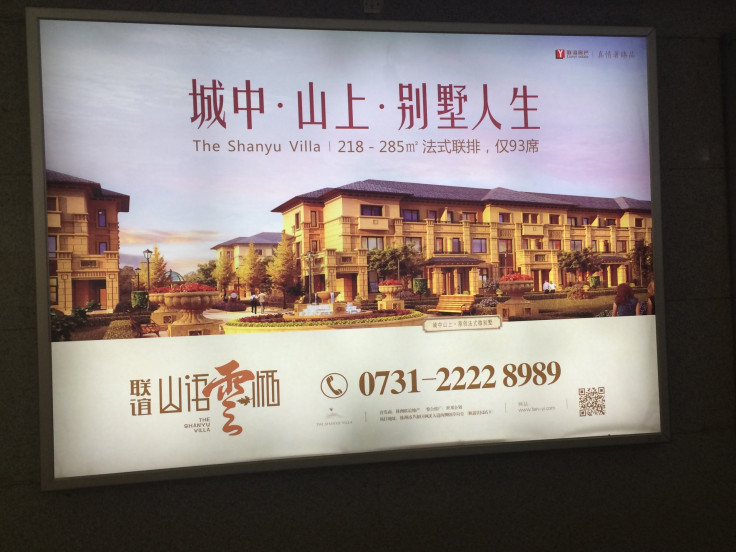
The question is, who’s buying? China is suffering from a glut of real estate development, the result of a massive boom in construction over the decade to 2013. And many inland cities, like Zhuzhou, have found it hard to sell off this housing stock, following the double blow of a tightening of rules on loans and down payments aimed at cooling an overpriced market three years ago and a general slowdown in the nation's economic growth rate over the past couple of years. It’s part of a real estate problem that is turning into one of the Chinese government’s biggest headaches, as it seeks to stimulate the economy by stimulating domestic consumption.
“Zhuzhou has an inventory problem — there are a lot of empty places that are pretty hard to sell,” sighs one middle-class citizen. “And the tendency has been for prices to fall.”
At the Sungold Town development, in a popular downtown area near the Xiang River, there’s still demand for apartments in the new tower, Phase 8, that's currently being built, says the salesman, as he shows prospective customers round the “Mediterranean-style” show apartment, complete with photos of Santorini windmills. And there should be: This is one of the city’s most established modern neighborhoods, with the schools, shops and amenities that many of the new suburbs still lack.

But even here they’re offering "semi-free balconies" and other special offers. Prices in the area are down from a peak in 2013, says one local real estate agent: “Some of these places used to sell for around 6,800 to 7,000 yuan ($1,050 - $1,080) per square meter. The prices went up fast for several years,” he says. “Now there are secondhand apartments available for 4,500 yuan (around $695) while new ones cost up to 5,000.”
Some new construction is still going ahead in Zhuzhou, the agent notes. But “developers are being more cautious: The projects are now three or four buildings when they used to be 10, and they'll build one and sell it before they start on the next one,” he says.
Prices in Zhuzhou are now just around one-tenth of those in some of China’s biggest cities, like Shanghai or Shenzhen. And Zhuzhou is far from being the hardest-hit city in the country.
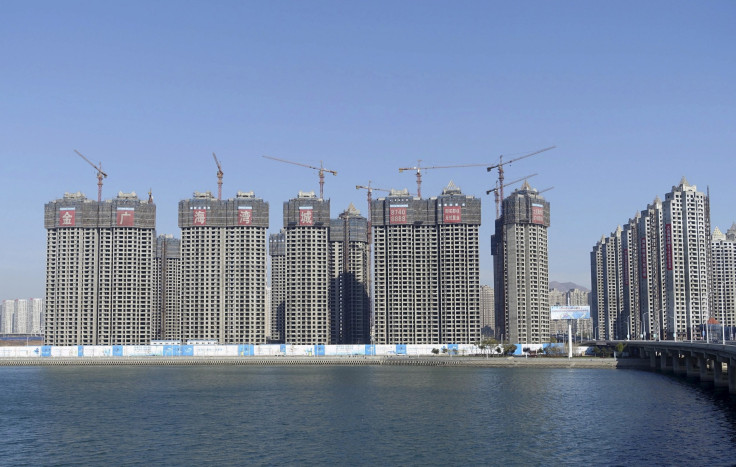
It’s home to a regional textile trading hub, established rail and aviation factories and is also a stop on the new high-speed rail route connecting southern China to the north. The provincial capital, Changsha, and its airport are only a hour’s drive away, too. Other cities in Hunan, like Changde, 200 kilometers (120 miles) further northwest, have seen prices fall even further under the weight of large stocks of unsold property.
It’s become a national problem. The end of China’s real estate boom, which saw property prices rise some ten-fold in the decade to 2013, has left the nation with an estimated 735 million square meters of unsold property — or some 13 million unsold homes — as of the end of March, according to official statistics. Much of this unsold property is in smaller or inland cities known as “third or fourth tier” cities. New construction and land sales in such cities fell sharply last year as a result.
It’s a major drag on China’s economy, of which real estate was once a driver: “Real estate is the single most important sector of the Chinese economy,” says Frank Chen, executive director of China research at real estate company CBRE. “Local governments in particular rely on property. So the government is always worried about its impact on growth.”
Indeed, analysts at HSBC have estimated that the real estate slowdown, and the resulting slump in new construction, "shaved one percentage point off China’s GDP growth" last year, when it fell to 6.9 percent, its slowest growth rate for a quarter century. It’s also dealt a heavy blow to the finances of local governments, already struggling with slowing revenue from manufacturing — and often saddled with debt from the stimulus-led boom that followed the 2009 financial crisis.

“In recent decades local Chinese governments have made most of their annual revenue — up to 70 percent in some cases — from land sales,” says Michael Cole, founder of Shanghai-based real estate intelligence website Mingtiandi. State ownership of land means they’re effectively “the biggest landlords in China,” Cole adds. “They’re in the real estate business. So they need the property industry and land sales to keep the lights on.”
Not surprisingly, the Chinese government has made selling off the glut of inventory one of its highest priorities this year, in the hope it will help mitigate the effects of the slowdown in manufacturing and boost industries from renovation and construction to furnishings and lifestyle. President Xi Jinping has personally spoken out on the urgency of the issue. But the government's choice of policies to stimulate such sales has not been without controversy. Last year it freed up purchasing restrictions, introduced in 2012-13, with the aim of helping places like Zhuzhou. “Loans are pretty easy to get now,” says an agent in Zhuzhou. “Last year the government cut interest rates, and they reduced the down payment for first-time home buyers to just 20 percent [from 30 percent]." Equally significantly, he notes, “the developer will let you spread the down payment over three years; you can pay it in installments with no interest.”
The relaxations have undoubtedly made it significantly easier for people around China to buy property over the past year — with some unexpected consequences. While they’ve had some effect in smaller cities, some of which have seen price rises and a certain rebound in transactions, many observers say the biggest impact of these more relaxed policies has actually been to fuel a boom in property sales, and some steep price hikes, in the big coastal cities of eastern and southern China — where prices were already high.
It’s exacerbated the divide between the wealthiest coastal cities and smaller and inland ones. Official figures show that in March prices rose year-on-year in 40 of China’s 70 biggest cities but fell in another 29 cities and, analysts say, in many other smaller ones too.
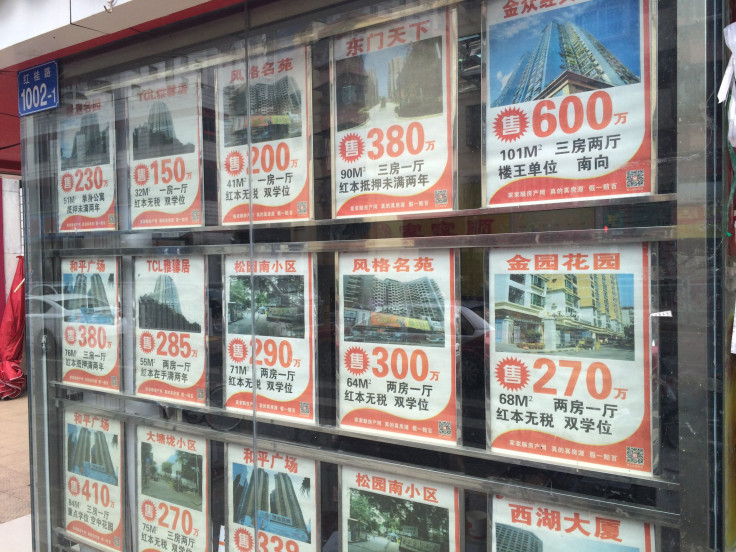
It’s certainly led to something of a purchasing frenzy in places like Shanghai, where prices rose by some 20 percent in the year to February, and by another 3.6 percent in March alone. Excited agents were cold calling and accosting potential buyers in the street, in echoes of the boom years before 2013. The biggest jump of all has come in the southern city of Shenzhen, close to Hong Kong, where prices rose some 62 percent in the year to the end of March — and where the hysteria was boosted by events like a mass auction in a sports stadium where almost $1 billion worth of property was sold in a single day late last year.
The boom was fueled by unofficial gray-market lending, including loans to cover home down payments from agents themselves and new sources such as unofficial online peer-to-peer lenders. This provoked fears of a credit bubble as well as growing complaints about ever more unaffordable prices for ordinary citizens. China’s big cities have long been as expensive as many major western cities — yet wages are far lower: “In San Francisco or New York City, the average home costs six to seven times the average family’s income,” says CBRE’s Frank Chen. “In China's Tier 1 cities the same ratio is easily 20 times.”
The government has now responded by announcing a crackdown on such lending. It's also targeting scams that state media say have been used to boost prices such as developers hiring "fake buyers" to increase the pressure on genuine would-be purchasers to sign contracts quickly and at inflated prices. In March, Shanghai and Shenzhen both announced new restrictions on purchases — effectively reversing last year’s relaxation on loans and down payments — and requiring would-be buyers to have lived in the city for several years instead of just one (though the capital, Beijing, has said it will not yet follow suit.)
Graphic: Carla Astudillo / International Business Times
But the policy flip-flops have added to a sense that the authorities are struggling to deal with the contradictory pressures of stimulating the market in smaller cities while stopping price hikes from getting out of a hand — and doing so without leading to a crash in property values in China's bigger cities.
It’s a tough challenge: “China is a very contradictory society. Lots of people don’t have houses, but lots of houses don’t have people, particularly in third- or fourth-tier cities,” says one Zhuzhou property agent.
How the government tackles this conundrum may be crucial for China’s economic and social stability in the coming years.
One solution the authorities have proposed is to encourage millions of migrant workers from rural areas to buy property in smaller cities. The government has previously set a goal of increasing China’s urban population by some 100 million by 2020 — a move designed to boost domestic demand — and the assumption is that many of the estimated 160 million migrants who have moved to China’s cities to work in industry and services over the past decade will be keen to buy apartments in urban areas.
Yet some experts say there are a range of factors that undermine the chances of this strategy having a swift and significant impact. For one thing, there is a question-mark as to whether much of China’s unsold housing stock is the right type for China’s toiling masses, or in the appropriate location:
“A lot of what was built in recent years is the wrong thing in the wrong place,” says Mingtiandi’s Michael Cole. “There’s a lot of inappropriate high-end real estate built in factory towns. The local developers all wanted to build high-end products, they thought it was more cool: Similarly everyone wanted to build five star hotels, no one wanted to build three star hotels even though that’s what most people need. So a lot of places saw 200-square-meter luxury apartments built in outlying areas. But in these smaller cities there aren’t lots of white-collar workers to buy these things, like there are in Shanghai. There are blue-collar workers who just want a nice affordable place to live.”
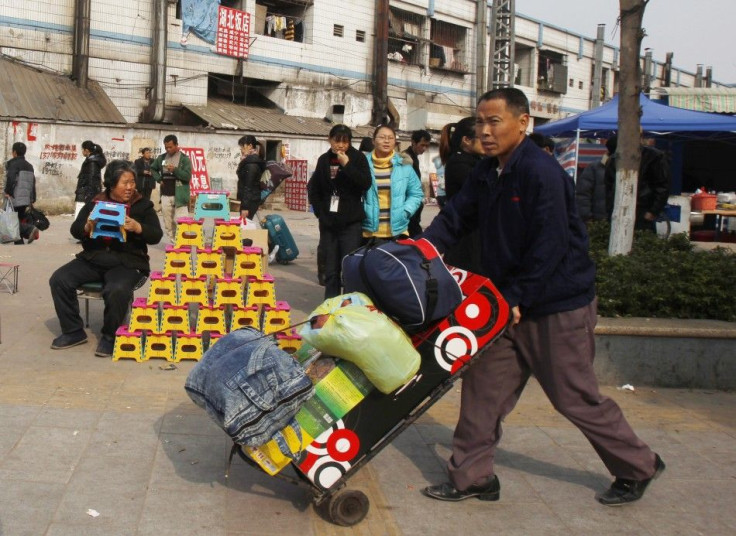
In other cases, he says, the developers “got cheap land 10 kilometers [six miles] from the city with no transport and no place to work nearby … So there’s not the demand. A lot of it will simply never sell.”
In Zhuzhou, exactly the type of inland city that the policy is aimed at, some migrant workers already there certainly seem to have doubts about their prospects of becoming permanent local residents.
“Ordinary people can’t afford those new homes. They’re for rich people,” says a taxi driver who gave his name as Mr. Zhou. He came to work in the city from a more rural part of Hunan province five years ago. “I can’t afford to buy something here. We just rent a place, and our business is bad. The prices are too high for me to buy now.”
His friend Mr. Li, who’d come here from eastern China a decade ago, agreed: “Business is bad here. I want to go back home!” he said.
For such people, who typically earn just 1,000-2,000 yuan (around $155-$310) a month, even prices like 3,000 yuan (around $460) per square meter — the cost of homes in Zhuzhou's cheaper northern suburbs — seem unaffordable.
The prospects of selling to migrants are also complicated by other factors, including China’s household registration system, which separates the nation's citizens into urban or rural categories depending on where they were born and denies those with rural registration access to urban welfare and education.
There has been some talk of local governments offering migrants local residency papers and subsidies, too, to make this policy work. One aim of this approach is to keep them away from major cities, which the government says are already too crowded. Shanghai officials have said this year that, with a population that has grown from some 16 million to around 25 million in the last 15 years, the city is now officially “saturated.”
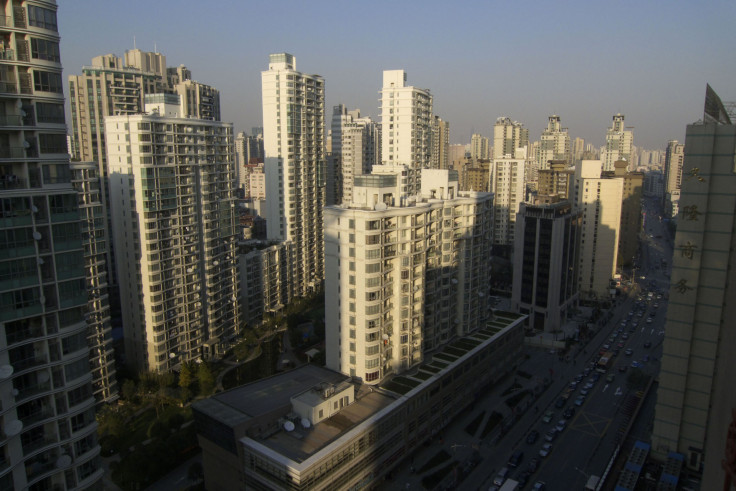
Julia Wang, China economist at HSBC, believes the policy of using migrants to stimulate destocking of unsold property does have potential, with some experiments, such as in one small town in western Sichuan province, helping to boost sales of housing inventory over recent months. “Migrant workers are the biggest pool of latent demand in third- and fourth-tier cities,” she says. "Some 70 to 80 percent of them live there."
However , Wang says the central government will not introduce a single national plan to put this into practice but rather leave implementation to "local government initiatives, some subsidizing purchases, some making it easier to obtain loans, some relaxing restrictions on residency or access to local education and pensions." It’s a step in the right direction, she says, though she adds that the approach should not be "overkilled," since "there are always risks associated with mortgages, particularly giving them to a new group of consumers."
Yet it remains to be seen whether local governments currently have the funds, or the will, to create truly affordable housing for rural migrants. Over the past five years, China has already embarked on a campaign of affordable housing construction, available only to permanent urban residents. But experts say this is basically slightly subsidized commercial housing, at prices still out of reach for many ordinary working families. And CBRE’s Frank Chen is doubtful that the migrant plan will solve China's inventory problem. “Yes, some lower cities are taking measures, such as changing hukou rules, giving subsidies or removing transaction costs, so that might attract some people. But ultimately it’s still hard for migrants to afford to buy property in these towns,” Chen says.
Forced relocation of farmers from their land, with compensation either in cash or urban homes, could help reduce the property glut. This is still taking place in some areas, including some rural suburbs of Zhuzhou. But such land sales are becoming less frequent across China, falling by more than 21 percent last year.
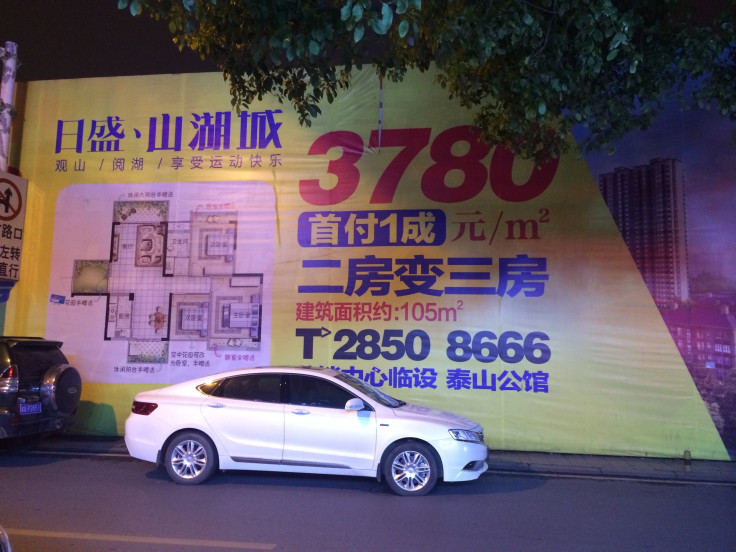
And, Chen adds, there is another fundamental question: Can migrants actually be lured away from the big cities back to smaller places, often nearer their homes? There have been cases of factories moving inland from China’s southeast, where labor and other costs are high, in recent years. But these are still relatively isolated cases, and Chen says many migrants still want to move to major population centers.
“The most important thing is, if you want migrants to stay in these local cities, where are the job opportunities?” he asks. “In these towns it’s hard for them to earn more than 1,000 to 2,000 a month; in the big cities they can earn 4,000 to 5,000 yuan. There are still a lot of people who are willing to put up with very difficult living conditions in the big cities for that extra 2,000 to 3,000 a month. It’s a huge difference for them,” he says.
What’s more, he says, migrants who want to move closer to home often still have houses and land in the rural areas they came from, since farmers, unlike urban citizens, are allowed to build their own homes, which makes it less necessary for them to buy expensive urban property.
And overall, he says, many of China’s bigger cities have developed so fast, and so far beyond those in the hinterland in terms of lifestyle, that they continue to attract people, both skilled and unskilled. Selling off the inland housing inventory will thus be hard “unless the government can come up with a very creative design or structure. This is really a structural issue: There’s still a [net] population outflow from smaller cities,” Chen says.
Indeed, it’s this outflow, the continuing movement of people into China’s major urban centers, that has contributed to the government’s other real estate headache: the signs of a new wave of real estate market overheating and growing inaffordability in the major cities.
Lily (she didn't want to use her full name) is a native of Zhuzhou, a university graduate who followed her urban dream and moved to Shenzhen, the coastal city close to the Hong Kong border that has pioneered many of the country’s economic reforms and is home to much of its most modern industry and services. Shenzhen prides itself on its relative openness to outsiders: “As soon as you arrive here, you’re a Shenzhen citizen,” say the signs on the city’s streets. That’s not completely true: Local residency permits are not easily available to ordinary workers — but many young professionals from other parts of the country have, like Lily, become permanent residents.
Last year, after several years working for a design company in Shenzhen and living in accommodations provided by her employer, Lily decided to make the most of Shenzhen's openness and buy an apartment, taking advantage of cheaper loan facilities for people with permanent residency rights. Her motivations echo some of the reasons why analysts say there is still latent demand for housing in China’s bigger and more desirable cities: “Chinese people, both of my parents’ generation and my own, have the idea that they want to own their own house,” says Lily, over coffee with a friend in a tree-lined outdoor pedestrian piazza. “So when you move somewhere to work you certainly feel you want to buy a place … And Shenzhen is very appealing: It’s near the seaside; I like the environment [and] the climate; there are blue skies. It's not like back home, an industrial city where the air is always polluted.”
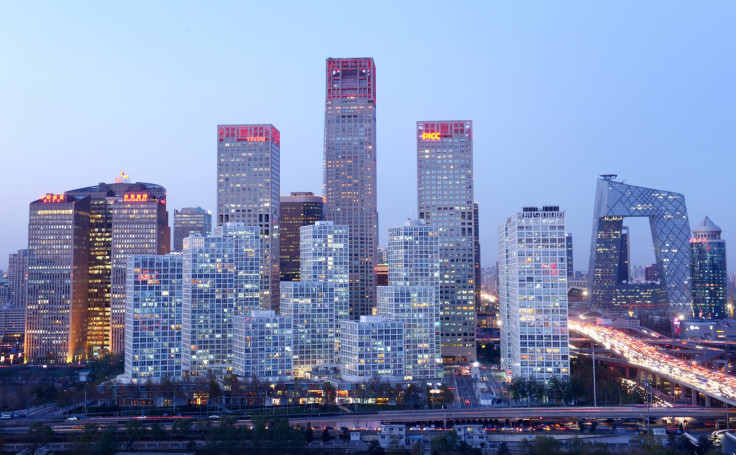
And like many young Chinese professionals, she wants to have an apartment before she gets married — and one with space for her parents to stay, too, to help with possible childcare in the future. “My parents may move here one day, too, after they retire. If I get married and have a kid they’d like to live with me,” she says.
But Shenzhen’s appeal to young people from all over China, combined with a shortage of land and the opening last year of a new free trade zone in the city, have all contributed to soaring prices, experts say. And Lily had the misfortune to start looking just as the boom kicked off, after down payment policies were relaxed last spring.
“If you compare prices in Shenzhen to my hometown, the difference is like heaven and earth!” she sighs. “It’s two extremes. Back home there’s a stockpile. Here they sell out as soon as they come on the market,” she adds, admitting to “a sense of panic” as she watched prices rocket last year.
It meant that she had to accept that, with a monthly salary of some 10,000 yuan (around $1,540), there was no way she could buy a home in the city on her own.
“Before I had any experience of society, I thought I could do it all by myself,” Lily says. “But when you see the way prices are going up, you realise it’s very difficult. House prices just don’t really have any connection to your salary. No one can pay it all themselves."
She soon realized that even the monthly repayment on a loan for the type of apartment she was looking for, not right downtown but not too far out, might be more than her monthly salary — perhaps as much as 12,000 yuan.
So when she found a 90-square-meter apartment last December, only about 20 minutes by road or half an hour by public transport from her office, for a price of around 3.6 million yuan (around $560,000), which was below average for the area, her parents agreed to make the down payment and to help pay off the loan, too.
“These days we say two generations have to pool their resources to complete one generation’s dream of buying a house!” Lily sighs. She acknowledges that her parents think it’s “very expensive. "It’s a pretty heavy burden for them.” And to help cover her own share of the mortgage repayments, she’s now rented the apartment out, at least for a year or two, and is staying in her small apartment.
“There’s so much pressure, you just have to buy first and decide whether or not you can afford to live in it later.”
Still, Lily just feels glad she bought before prices rose even further and before the government tightened the rules again in March; otherwise she would have had to pay an extra 10 percent at the time of purchase.
The government’s attempt to quell borrowing to buy may well be designed to help ordinary people; Shenzhen Mayor Xu Qin publicly spoke out last year about his worries that ordinary people would be priced out of the market. Yet many doubt prices will fall much — they didn’t when the market slowed two years ago — and many believe the demand is still solid enough to sustain prices.
The end of China’s real estate boom, which saw property prices rise some ten-fold in the decade to 2013, has left the nation with an estimated 735 million square meters of unsold property — or some 13 million unsold homes.
Jerry Huang is one of them. Last year he bought two apartments in the Shenzhen suburbs for 2 million yuan (just over $300,000) each. There was just one difference: The first one, which he bought in May, was more than 100 square meters; the second, which he bought five months later, was only 70 square meters, due to the rise in the market. Yet Huang, a factory owner, is convinced that both were good investments. The second one has already gone up in value by a third, he says. And having sold off a property in 2009, when he thought the boom was over, he’s not going to panic this time.
“Shenzhen has a shortage of land, and people from all over the country want to come here," he says. "A house is a better investment than gold.”
It is not yet clear whether the measures aimed at making it harder to get loans will have a major impact in cooling the market in the long term. Overall transaction volumes have slowed in Shanghai and Shenzhen in recent weeks, but Chinese media have reported on companies finding new ways to make unofficial down payment loans.
“I think it will be very hard to control gray market loans,” says one Shenzhen real estate agent, who asked not to be named. And while Shenzhen currently limits individuals or couples to two properties in total, he notes that there is no limit to the number of properties people can buy in the name of a company.
Other strategies, such as couples divorcing in order to be allowed to buy more properties, are also reportedly becoming increasingly common, while some investors are said to be pooling funds to buy properties.
It all means that many young people in China’s big cities are likely to remain “house slaves,” as people who have put almost their earnings into buying property are described in Chinese.
Mingtiandi’s Michael Cole says the authorities are torn between helping ordinary people buy homes and protecting those who have already invested. “There’s a real tension between people that need places to live and people that are using real estate as an investment product,” he says.
Cole says there are sometimes divergent opinions between central and local authorities, too. “The government, especially at the central level, they want to ensure that people are happy with their lives, and part of that means being able to afford a place to live, and so they have an interest in property costs being affordable to people who aren’t multimillionaires.” As a result, “They don’t want another bubble in the big cities: Skyrocketing prices have caused real pain in those cities.”
Yet in practice at the grassroots level, he says, local governments "are incentivised to have lots of major real estate transactions," since these boost their finances. As a result local government officials often believe “the higher the costs of real estate the better … At least until there’s a riot or protest, in which case there would be a very different set of circumstances!”
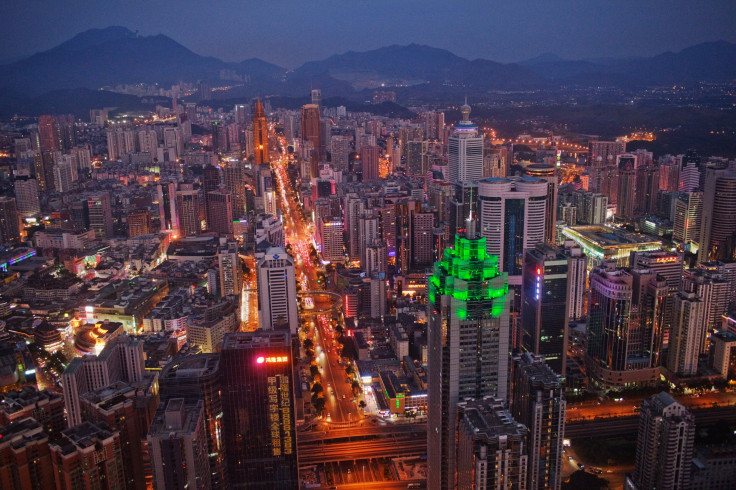
CBRE’s Frank Chen says that the government is “under pressure to cool the market” in the big cities, which could result in some consolidation and some people to lose out if prices become “totally unsustainable.” But he says last year’s boom in Shenzhen was “totally out of anyone’s expectation.” Many observers do not expect prices to fall significantly. Mingtiandi's Cole says that "when demand goes down, a lot of investors simply don't sell their property; they just wait for the price to come back up." The fact that Chinese property owners typically move houses less often than their counterparts in many western countries is another reason why the nation sees less panic-selling when the market is slack, with many people in big cities remaining confident — or at least hoping — that demand will always rebound.
Back in Zhuzhou, as they struggle to deal with the opposite problem, too much unsold property, some people are selling properties they bought in the last boom at a loss, according to one agent. "They bought as an investment, but now they need the money, so they have to sell," he says. But other home owners say they are keeping calm. "We bought early, so we're lucky," says one resident of the Sungold Town development. "I don't think prices can fall much further."
Cole says he believes at least some of the inventory in towns like Zhuzhou will eventually be sold as long as China’s economy stabilizes. But Wang Jianlin, who became China's richest man during the boom years on the success of his real estate company, Wanda, said recently that it would take four to five years to destock China's unsold property.
Cole says the boom and bust cycles are evidence that the Chinese authorities’ whole approach to the real estate sector needs to be adjusted. Above all, he says, the government should introduce an annual property tax, something which has been discussed but has yet to be implemented. “That would be much more rational, and an easier way to regulate the market than by adjusting the requirements for down payment loans up and down, which is a clumsy tool and leaves many loopholes.”
The lack of such a tax, Cole says, means that currently "there's no cost to holding and owning real estate, which builds a lot of inefficiencies into the market and encourages the use of real estate as an investment product" — in other words, promotes speculation.
A tax, on the other hand, would reduce the pressure on local governments to sell land to earn money, he says, and hopefully reduce the chance of another glut of unsold property. But Cole says that the idea of such a tax, and the complete national register of property ownership it requires, is likely to face "tremendous" resistance from local bureaucrats. Some of those "who would be implementing the system own several apartments," he says. They could, therefore, be concerned at the idea of a "nationwide property registration system that shows their holdings in detail," partly through fear of being caught in China’s anti-corruption campaign. The national register of ownership was due to have been introduced by last month, Cole says, but the government announced in mid-April that it would now be put into practice "in the next five years." It’s another reminder that tackling China’s real estate challenges is likely to be a long and complex process.
© Copyright IBTimes 2024. All rights reserved.






















